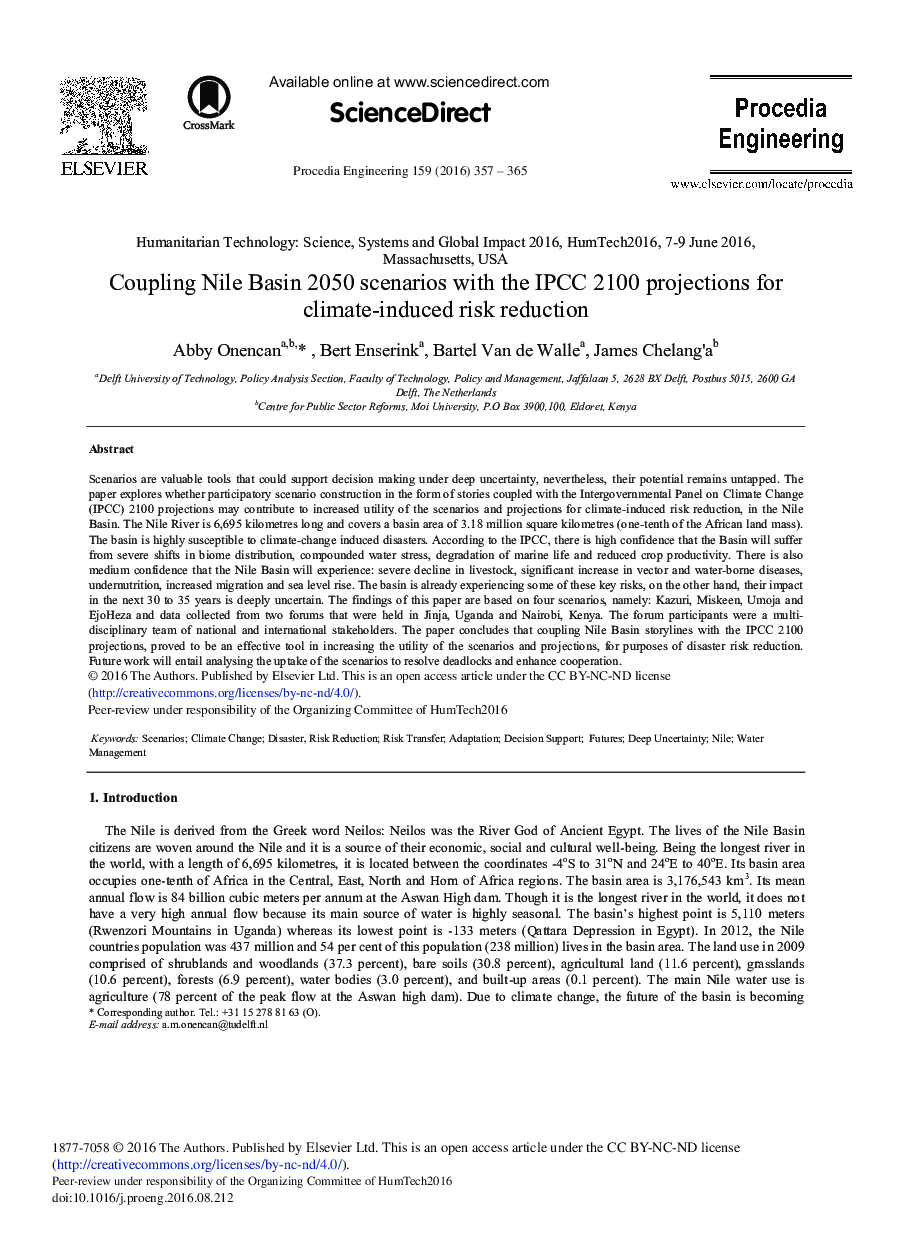| کد مقاله | کد نشریه | سال انتشار | مقاله انگلیسی | نسخه تمام متن |
|---|---|---|---|---|
| 5030118 | 1470667 | 2016 | 9 صفحه PDF | دانلود رایگان |

Scenarios are valuable tools that could support decision making under deep uncertainty, nevertheless, their potential remains untapped. The paper explores whether participatory scenario construction in the form of stories coupled with the Intergovernmental Panel on Climate Change (IPCC) 2100 projections may contribute to increased utility of the scenarios and projections for climate-induced risk reduction, in the Nile Basin. The Nile River is 6,695 kilometres long and covers a basin area of 3.18 million square kilometres (one-tenth of the African land mass). The basin is highly susceptible to climate-change induced disasters. According to the IPCC, there is high confidence that the Basin will suffer from severe shifts in biome distribution, compounded water stress, degradation of marine life and reduced crop productivity. There is also medium confidence that the Nile Basin will experience: severe decline in livestock, significant increase in vector and water-borne diseases, undernutrition, increased migration and sea level rise. The basin is already experiencing some of these key risks, on the other hand, their impact in the next 30 to 35 years is deeply uncertain. The findings of this paper are based on four scenarios, namely: Kazuri, Miskeen, Umoja and EjoHeza and data collected from two forums that were held in Jinja, Uganda and Nairobi, Kenya. The forum participants were a multi-disciplinary team of national and international stakeholders. The paper concludes that coupling Nile Basin storylines with the IPCC 2100 projections, proved to be an effective tool in increasing the utility of the scenarios and projections, for purposes of disaster risk reduction. Future work will entail analysing the uptake of the scenarios to resolve deadlocks and enhance cooperation.
Journal: Procedia Engineering - Volume 159, 2016, Pages 357-365